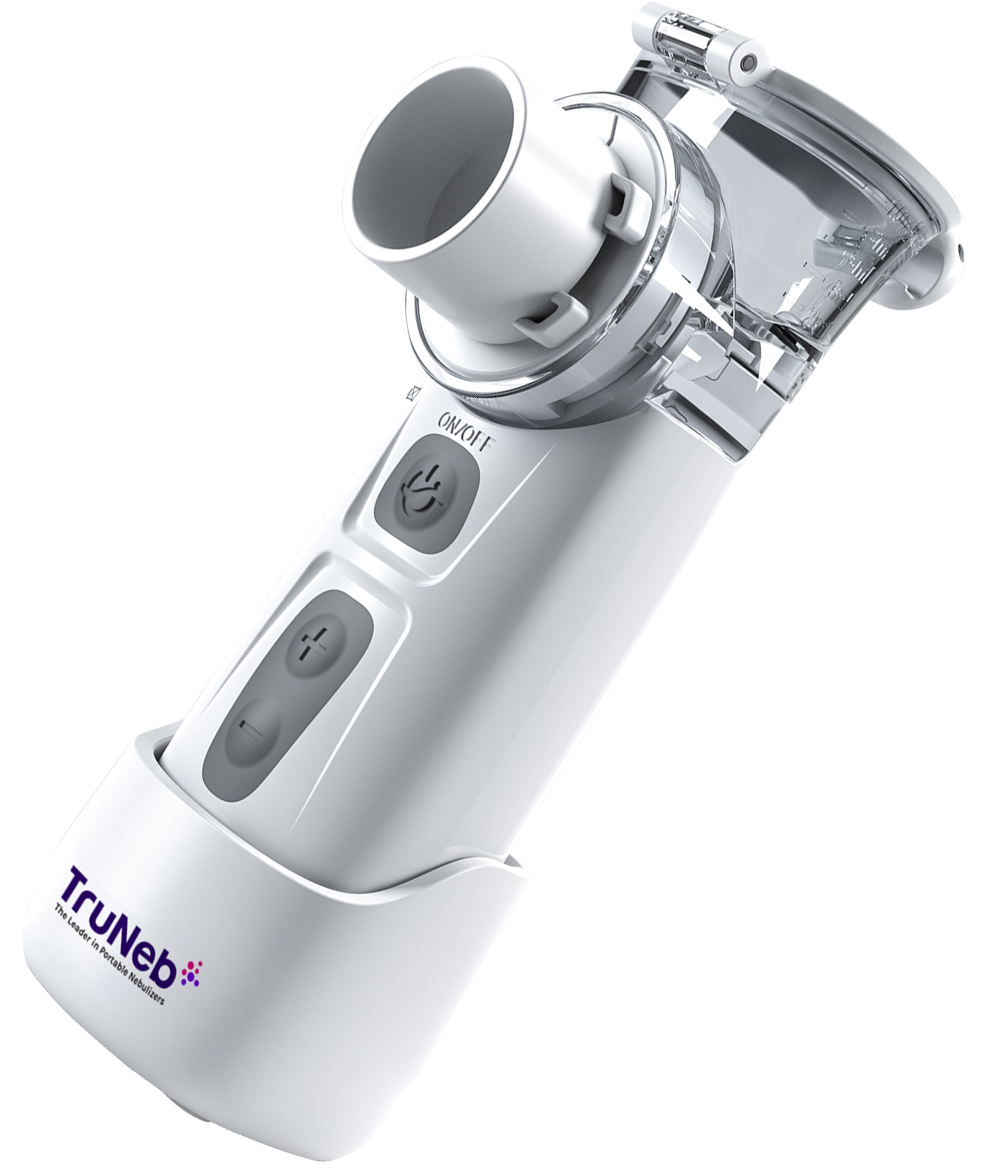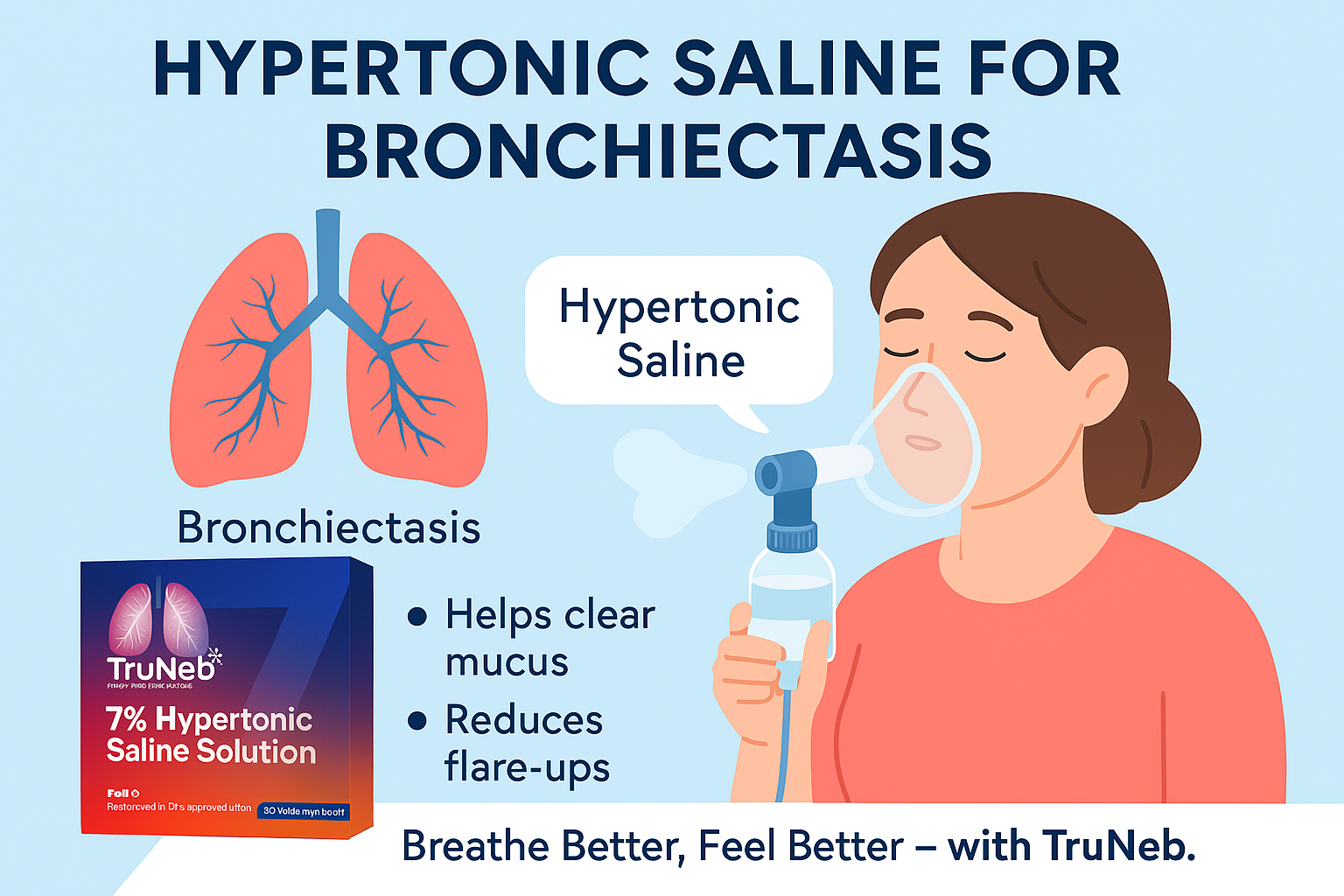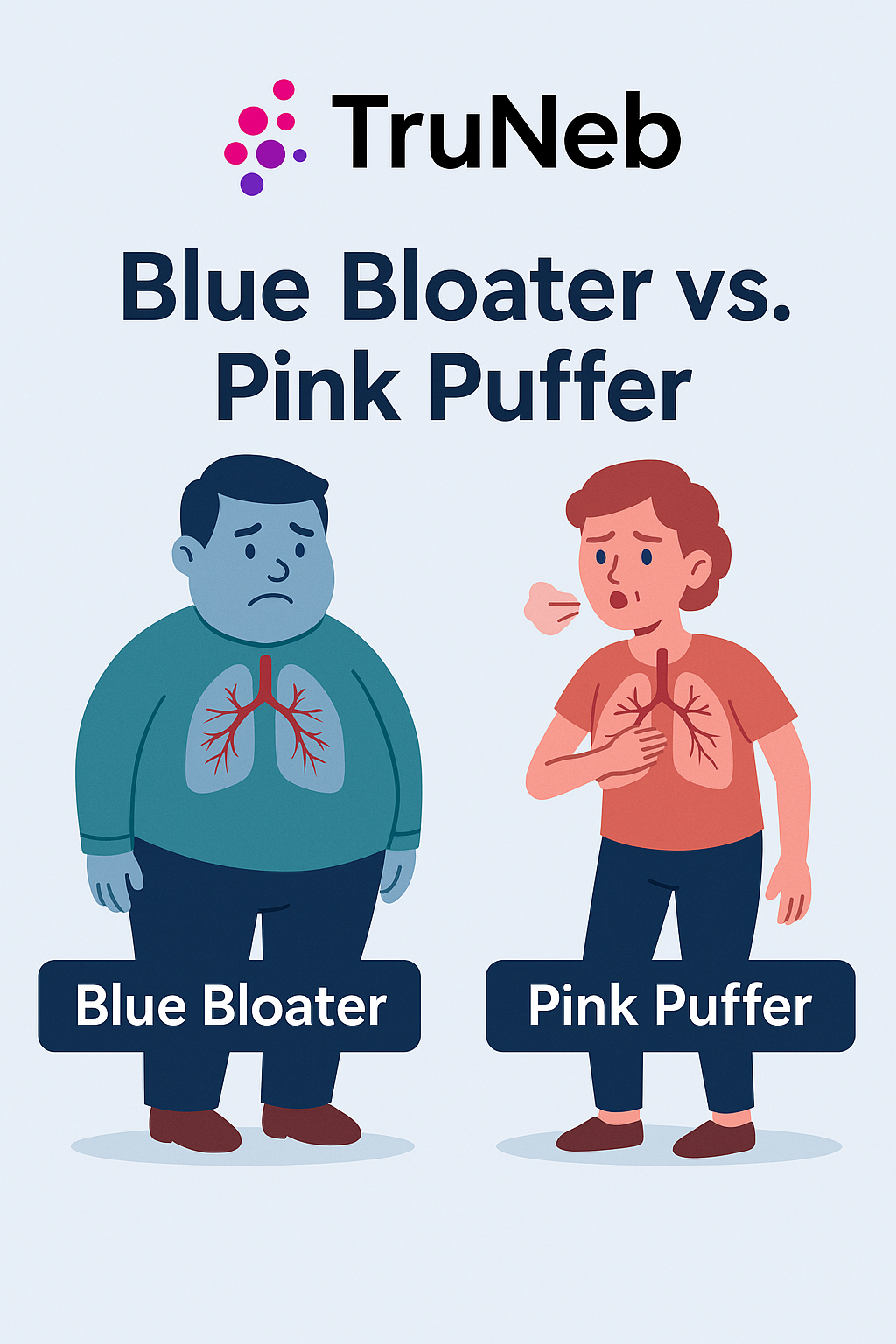On this page
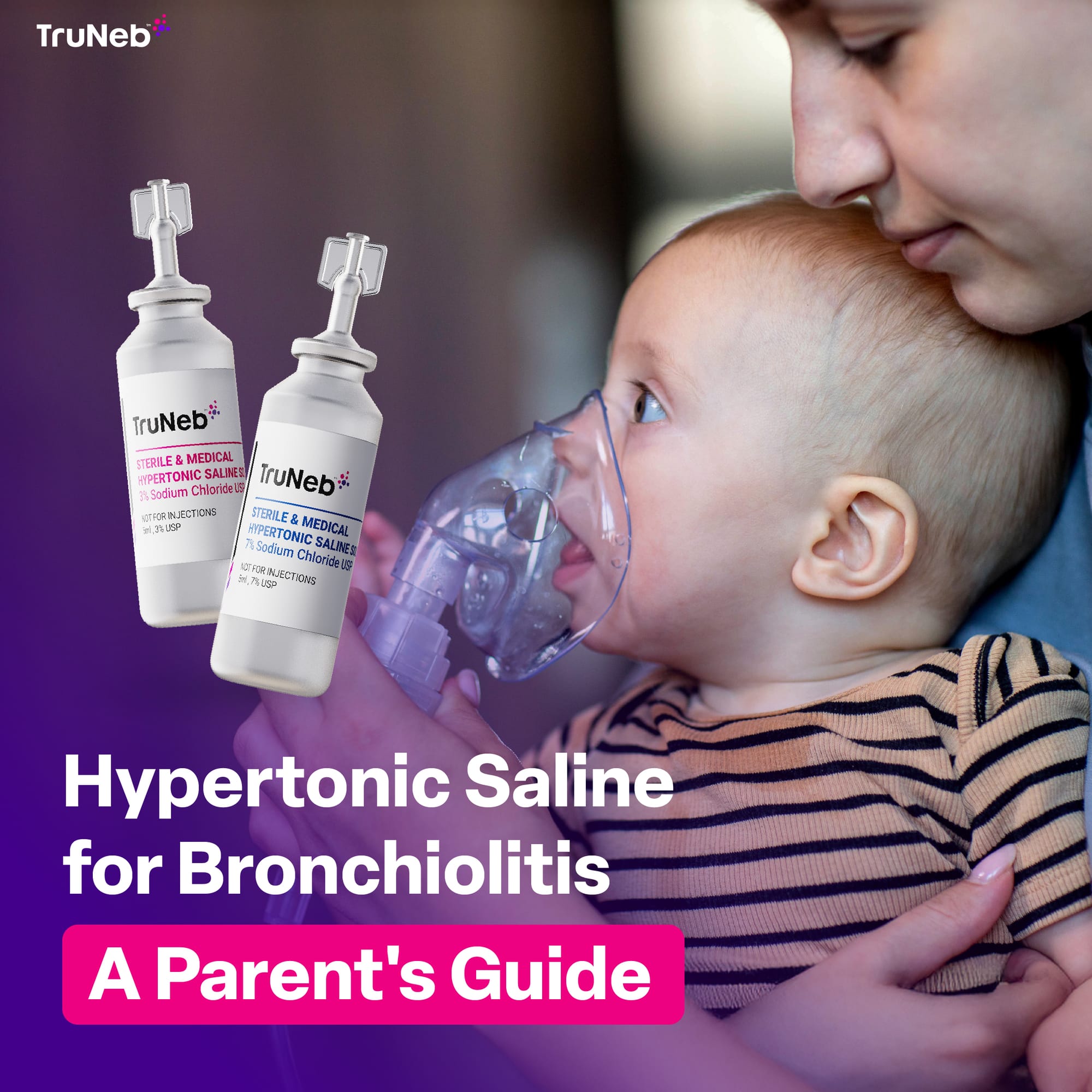
A baby having breathing issues is one of the scariest things a parent can experience. And in their first year of life, infants are at higher risk for respiratory distress from bronchiolitis—a lung infection that causes swelling and mucus buildup in the small airways. It’s usually caused from RSV (respiratory syncytial virus). People of any age can get RSV, but babies typically develop bronchiolitis, making it more of a threat to their health.
To help manage symptoms, some doctors use nebulized hypertonic saline. It’s a simple saltwater mist that can help loosen mucus stuck in the airways. While it’s not a cure, it may be part of a care plan recommended by your doctor. Let’s dive into why hypertonic saline for bronchiolitis can help.
What Is Bronchiolitis?
Bronchiolitis is an infection that affects the small airways in the lungs, called bronchioles. It’s usually caused by a virus, with RSV (respiratory syncytial virus) being the most common culprit. Other viruses like rhinovirus or influenza can also cause it.
This illness mostly affects babies and toddlers under 2 years old, especially during the colder months. It usually starts out looking like a regular cold, but can quickly become more serious.
As the infection progresses, you may notice:
- A frequent or harsh cough
- Wheezing (a whistling sound when they breathe)
- Congestion
- Fast or labored breathing
- Trouble feeding or sleeping
For most kids, bronchiolitis clears up with rest and care at home. But for some—especially premature or young babies—it can be more serious and require extra support.
Why Mucus Buildup Is the Big Problem
The real challenge with bronchiolitis isn’t just the virus itself. It’s the way the infection causes swelling and thick mucus in the airways. When the bronchioles are inflamed and filled with mucus, it becomes harder for babies to move air in and out of their lungs.
Since infants already have narrow airways and weaker coughs, this buildup makes it especially hard for them to breathe comfortably. That’s why clearing mucus becomes such a big focus of treatment.
This is where nebulized hypertonic saline for bronchiolitis may help. This treatment is sometimes used in clinics or hospitals to loosen the mucus and make it easier for babies to breathe.
How Hypertonic Saline Works for Bronchiolitis
Hypertonic saline is a sterile, saltwater solution that has a higher concentration of salt than what’s normally found in the body. For bronchiolitis, the most common strength used is 3% hypertonic saline solution, though higher concentrations exist for other conditions.
When inhaled through a nebulizer, this salty mist draws water into the airways. That extra moisture helps thin out thick, sticky mucus, making it easier for your baby to cough it up or clear it naturally. The idea is that by loosening the mucus, your child can breathe a little easier.
What Nebulized Hypertonic Saline Does in the Lungs
When you use a nebulized hypertonic saline treatment, the solution is turned into a fine mist that your child inhales through a mask or mouthpiece (masks work better for babies and young children). This mist reaches deep into the small airways where the mucus tends to collect during bronchiolitis.
Once there, it helps:
- Hydrate the airway surfaces, which are often dry and irritated
- Loosen mucus that’s stuck in the tiny inflamed bronchioles
- Support better airflow and improve oxygen levels in some cases
It’s not a cure, but it can be one more tool to help your child feel a little more comfortable while their body fights off the virus.
Hypertonic Saline and RSV Infections
Is Bronchiolitis Caused by RSV?
In most cases, yes—RSV (respiratory syncytial virus) is the main cause of bronchiolitis. It spreads easily and often starts like a simple cold, but for infants and young children, RSV can move deeper into the lungs and cause serious problems.
RSV-related bronchiolitis tends to bring a lot of thick lung secretions, along with fast breathing, coughing, and wheezing. Because babies have such small airways, even a little inflammation or congestion can make breathing much harder.
Using a Hypertonic Saline Nebulizer for RSV
Some hospitals and pediatric clinics use a hypertonic saline nebulizer for RSV to help loosen and clear that stubborn mucus. The salty mist helps hydrate the airways, thin the mucus, and make it easier to move out of the lungs.
While hypertonic saline for RSV doesn’t cure the infection or make it go away faster, it can be part of supportive care. The goal is to improve breathing, reduce the need for other interventions, and sometimes even shorten hospital stays (for more severe infections).
In certain cases, your provider might recommend a 3% solution, sometimes referred to in studies as RSV hypertonic saline 3, though this always depends on the child’s age and how well they tolerate the treatment.
Is Hypertonic Saline Effective for Bronchiolitis?
What the Research Says
When it comes to hypertonic saline for bronchiolitis, many studies suggest that it can help shorten hospital stays or improve symptoms faster.
Factors like how sick your child is, how often the treatment is used, and whether it's paired with other therapies can all play a role in how well it works.
When Doctors May Recommend It
Doctors are more likely to recommend hypertonic saline nebulizers for RSV in the hospital, where treatments can be monitored closely. It’s usually not the first option at home, especially if your child has mild symptoms and is feeding, breathing, and sleeping reasonably well.
But if standard treatments like oxygen support or suctioning aren’t helping enough—or if mucus buildup is a major issue—some providers may suggest giving hypertonic saline a try.
As always, the best next step is to talk with your child’s doctor about what’s right for your situation.
Using a Nebulizer for Infants With Bronchiolitis
When a doctor recommends a hypertonic saline nebulizer for infants, the treatment is usually given using a jet or mesh nebulizer. These devices turn the saline into a fine mist your baby can inhale.
Since babies can't use a mouthpiece, the mist is delivered through a soft mask that fits over their nose and mouth. Treatments usually last between 5 and 15 minutes, depending on the concentration of the saline and the type of nebulizer used.
Safety and Side Effects in Infants
Hypertonic saline is generally well tolerated, but like any treatment, it’s not completely free of side effects. The most common reactions are:
- A brief coughing spell during or after the treatment
- A mild scratchy throat or nose
Some doctors may recommend using a bronchodilator (like albuterol) before the treatment to help open the airways and reduce coughing or tightness. This isn’t always necessary, but it can be helpful for babies who are more sensitive.
Keep in mind, this therapy isn’t for every child. Infants with certain medical conditions or a history of wheezing or asthma might not be good candidates. Always talk to your pediatrician before starting any nebulized treatment at home.
Frequently Asked Questions
Can I use hypertonic saline at home for my baby?
Hypertonic saline for bronchiolitis should be approved by your child’s pediatrician before home use.
What concentration of hypertonic saline is used for infants?
Usually 3% saline. Higher concentrations (like 7%) are not typically used in infants.
Where can I get hypertonic saline?
You can get medical-grade hypertonic saline from TruNeb™. We offer fast, free shipping and affordable saline for nebulizers.
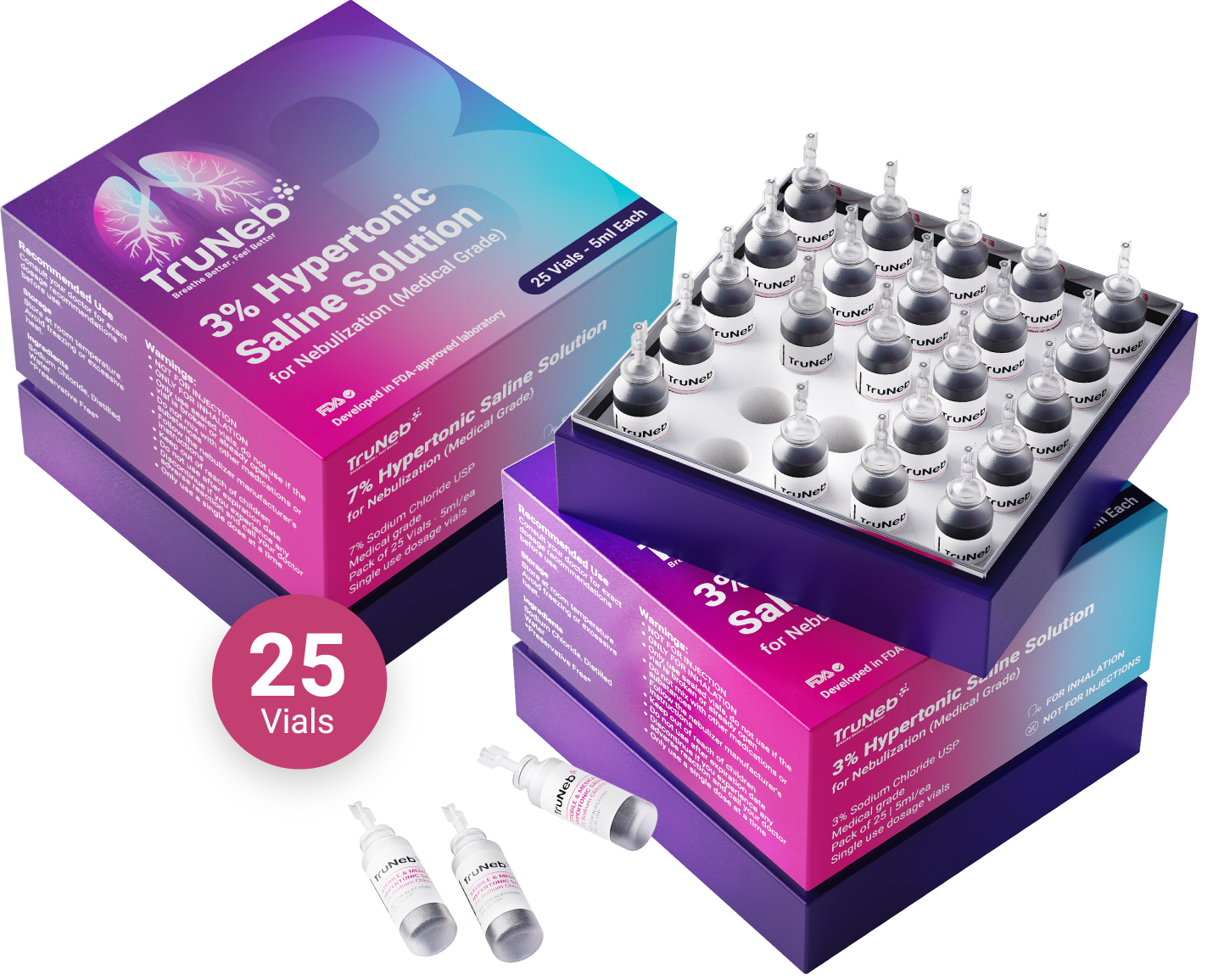
Get Your Hypertonic Saline Now
After getting the okay from your doctor, check out TruNeb’s hypertonic saline solution for bronchiolitis and other respiratory conditions.

